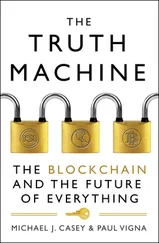“Soph, we need to get you away from here. You spent years at Raqmu studying the ancient Nabataean texts about women’s spirituality, right?”
Looking up from the table, her eyes still red, Soph allowed herself a tiny smile of pride. “Of course.”
“And exactly how many years were you there?”
“Almost six.”
Flooded with relief, I looked at Morehshin. She was nodding slowly. Without intending to, Soph had already served her Long Four Years.
Soph continued. “I can speak a little Nabataean too, though I guess it’s ridiculous to say that one speaks a dead tongue.”
“It’s not dead. Not where we’re going. There’s a safe harbor about two thousand years ago in the Nabataean Kingdom—it’s a place where the Comstockers can’t go.”
Soph’s eyes widened, and she burst into tears again. But this time, it wasn’t a jagged, hopeless noise. It sounded like she was wringing demons out of her body. She warded off their return with the salt that ran through her fingers and down the fresh burn scars on her arms.
* * *
Aseel used her considerable powers of organization to get us the hell off the continent as covertly as possible. Sol had friends in shipping, and he was willing to do us one more favor—especially since Aseel had agreed to manage his sheet music business after the Midway shut down in late October. We would take the train to New York, travel by steamer to Lisbon, and from there catch another ship to Tel Aviv. There was a newly constructed train route that took us east from Tel Aviv into the Ottoman-occupied territories surrounding Raqmu, known in my present as Jordan.
Raqmu was a thriving city of scientists, travelers, operatives, and spies. Home to the first Machine discovered in recorded history, its towering stone monuments dated back at least four thousand years. Shadowed by mountains and surrounded by high, rocky cliffs the color of rose gold, the city was shielded from attack but open to countless nourishing streams of fresh mountain water.
Centuries of human engineering guided that water from a wild rush down foothills into an elaborate system of canals, waterfalls, and pools that fed the city’s gardens and growing populace. Architecture here had evolved to suit the soft sandstone of valley walls, with buildings burrowed into the rock to form vast cave palaces. Building facades were grand edifices sculpted directly into the stone. Generations of workers had cut a second level of streets and sidewalks above the basin floor, reached by stairs that wound between jagged outcroppings. As a result, the city grid appeared to be filling the basin and sloshing up its sides.
There was only one way to enter this marvel of art and engineering, and that was through a narrow passage called al-Siq that wound between smooth, curving cliffs studded by sentry towers. No invading army had ever made it through.
We hired a porter at the train station to carry our tiny collection of bags into the city. As we passed through al-Siq, slices of sun illuminated the elaborately carved doorways, windows, and facades that marked the entrances to archive caves, old and new. Some were humble and neglected, while others were hung with flags and guarded by gunmen. These places were full of forbidden histories, official documents, state secrets, and untranslated assertions in languages no one remembered. Some held controversial memoirs from famous travelers, reporting highly divergent timelines whose dark arcs we’d narrowly escaped. Others were packed with ephemera like two-thousand-year-old receipts for grain and slaves, or board games from the seventeenth century.
Ancient manuscripts in Nabataean described how the city’s first settlers dug shelters into the natural rock walls surrounding their hidden village—and discovered that any symbols recorded inside remained intact, no matter how much history changed.
Wind whistled past us, eroding al-Siq one microlayer at a time. Born from sediment swirling at the bottom of the Earth’s oceans, these sandstone walls dated back to the Ordovician period. Raqmu’s pink rock had first seen sunlight on the coast of a barren supercontinent drifting slowly across the South Pole. Though it was the first Machine discovered by humans, it was the youngest by far. It was also the only one that spawned archive caves. The four other Machines were millions of years older, embedded in rocks formed half a billion years ago during the Cambrian, when multicellular life first evolved. Raqmu’s uniqueness raised unanswerable questions. Was it a more sophisticated version of the other Machines? Had we inherited the work of engineers whose technology could capture and program wormholes? Were the Machines built by one of those early life forms, long extinct? Extraterrestrials? Or were they completely natural phenomena that we’d need another two millennia of geoscience research to understand?
We found a pleasant room in the scholar’s quarter at an inn popular with English-speaking students. From our tiny window, we had a view of the ancient temple al-Khaznah, its elaborate columns emerging out of the rough rock like an architectural apparition. Beyond its facade was the Machine—and the civil servants who supported it. We were decades away from the founding of the Chronology Academy, so travelers at Raqmu dealt with an imperial bureaucracy full of ministers, military officers, and priests.
After settling in, we distracted ourselves with a walk around the neighborhood to find dinner. It was early evening, and Raqmu’s vertical streets teemed with people from all times and places. The high, embellished cliffs halved the sunset light, filling the canyon floor with purple dusk while minarets glowed orange over our heads. Students smoked and drank sweet, dark coffee at café tables dotting the sidewalks, while harried bureaucrats hopped on squealing cable cars that would take them to the suburbs. Temporal locals in their suits and robes moved through a crowd dressed in polychronological mashups of rayon, linen, hemp, and uncanny textiles that probably only a multi-tool could make. Without a doubt, Raqmu was the most chronopolitan place in the world, and it was one of the few cities where I felt at home. Here, no one ever pretended history was fixed. How could you, when the archive caves were everywhere, testifying to the existence of edits merged into and out of the timeline?
Over a meal of fragrant lamb and vegetables, Soph pressed me for more information about the archive caves. “Can we not simply figure out where this timeline went wrong by studying what other travelers have left there? We could discern the differences, and undo them.”
“Maybe everything left in the caves is a lie.” Morehshin grunted the words around a cigar. “Propaganda from another timeline.” She’d taken up smoking and meat, but still wouldn’t touch coffee.
I shot her a look. “I don’t think it’s as grim as that. Obviously what people say about their own timeline is biased. History is full of exaggeration and misrepresentation. But Soph, I never would have known to visit the Algerian Village without the caves. There is a lot of evidence that Comstock is at the center of heavy revision, especially after the Columbian Expo.”
Morehshin tapped ash into the cobblestone street. “The archive caves are also how I found Tess. Comstockers appear in many timelines. So does Harriet Tubman.”
“The Daughters of Harriet.” Soph breathed the name as if invoking a supernatural power. Then she turned to Morehshin. “Do the Daughters exist in your present time, too?”
“No. That is why I came back to find them.”
“But Harriet Tubman is part of your timeline?”
Morehshin was bemused. “We are all in the same timeline. There is only one.”
“But you two are always talking about many timelines. And that Comstocker, Elliot—he said he remembered a world where women didn’t get the vote. Where are all those other timelines?”
Читать дальше
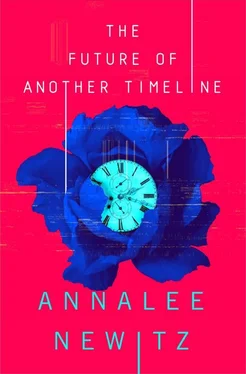

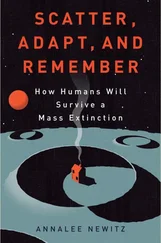



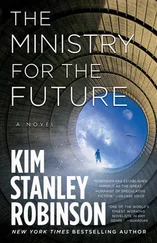
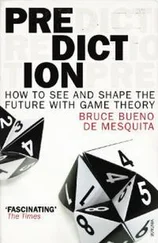
![Аннали Ньюиц - Автономность [litres]](/books/424681/annali-nyuic-avtonomnost-litres-thumb.webp)



